Metro rights historical wrong
March 8, 2010
Nearly five years ago, at the mouth of a new subway tunnel in East L.A., construction workers encountered a stunning find: coffin wood and human bones.
On that day in June, 2005, work on the Metro Gold Line Extension project abruptly stopped.
Archeologists using ground-penetrating radar and metal detectors began an exploration that lasted nearly a year. In the end, 174 burial sites with human remains and such artifacts as coins, coffin hardware, pottery, even opium pipes.
The workers had unearthed not only a long-forgotten public graveyard from the late 1800s but also a shameful chapter in Los Angeles’ history.
The hidden cemetery at First and Lorena streets had been the final resting place for indigents of all races, but mostly for immigrant Chinese laborers who’d been barred from other graveyards because of discrimination in the era of the Chinese Exclusion Act. The land—just outside Evergreen Cemetery, where some of the day’s most prominent civic leaders were buried—had become part of the Los Angeles County Crematorium in the 1920s.
Crews discovered the remains while removing a retaining wall on the crematorium’s south side. When news of the find spread, Chinese-American activists called for a quick investigation and a more respectful reburial.
And so on Monday morning, beneath lowering skies at Evergreen Cemetery in Boyle Heights, approximately 100 community members and a contingent of elected officials and Metro executives solemnly gathered to honor the dead and recognize their contributions by formally dedicating a new memorial wall.
Evoking the adobe walls and Spanish-tile roof typical of 19th century mission architecture, the wall tells the story on a pair of bronze plaques flanking a quartet of paintings illustrating the region’s Mexican, Native American, Chinese and Catholic heritage. Eight niches hold mounted fragments of tombstones and memorial markers, several comprising only Chinese characters. In the center, a large plaque reads simply:
In memory of those before us.
Courageous pioneers laid
the foundation through toil and struggle.
Those who follow honor their
spirit by achieving higher goals.
Supervisors Gloria Molina and Zev Yaroslavsky, Rep. Judy Chu and Los Angeles City Councilmember Jose Huizar were among the speakers recalling the historical sacrifices and warmly recalling their own childhood ties to the area. Irvin R. Lai, representing the Chinese-American community, delivered the “Sojourner’s Poem” composed especially for the occasion. The ceremony concluded with an interfaith benediction by a Catholic priest and Buddhist monk before the ceremonial unveiling.
The human remains and artifacts will be reburied inside Evergreen next to a historic Chinese shrine that was built outside the cemetery in 1888.
“On each grave with a marker,” Lai said, “we have Chinese characters that depict the ideas and the lament of the conditions that they were in,” he explained. “It’s very important that when you look at the grave and you see those four characters, they’re like talking back to you about how they feel at that particular time. The conditions were very bad, and they were treated very wrong.”
The archeological discovery revealed the extent of racism leveled at Chinese laborers in 19th century Los Angeles. In newspaper articles, they were derided as “Celestials” and “heathens.” Their loved ones were forced to pay $10 for burials while other impoverished families were laid to rest for free.
Some of the plots for the Chinese had been marked with headstones or “burial bricks,” painted or incised with information about the deceased, including the home village. One extraordinarily precise brick said a man named Wong, from a village called Wing Shing, died on December 11, 1885, between 4 and 5 in the morning.
The long-obscured graves of Europeans also produced a trove that included metal coffin fittings, buttons, ale bottles and a $10 gold piece. The headstones revealed that there’d been a high number of childhood deaths. Anna Ludemann, for example, died at the age of five months in 1880, her passing marked with a small marble headstone adorned with a cross.
Once archeologists had completed their painstaking excavation by hand of the remains, Metro established a public process involving community members to chart the future course.
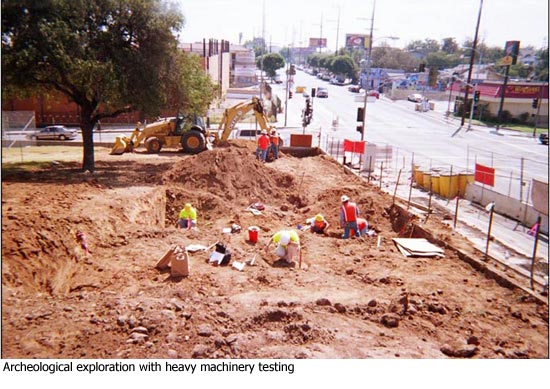
An advisory committee comprising business owners and residents along the six-mile alignment of the Eastside Extension, joined by members of the Chinatown community, met monthly over the course of three years to develop recommendations.
Once the initial decision was made to inter the remains at the neighboring Evergreen Cemetery, Metro engaged a feng shui consultant to determine the most hospitable location—and so the cemetery’s Chinese Shrine became the fitting and final resting place for these early Los Angeles pioneers.
Among those attending Monday’s ceremony was Gaye Buzbee Jacobs and her daughter Susan. They’d come from Colorado to pay final tribute to Gaye’s great-grandfather’s youngest brother, Thomas, a boy of 17 whose 1883 gravestone was among those unearthed in the potter’s field.
For her, the discovery had solved a longstanding family mystery. “He was a rascal,” she conceded with a chuckle, “he ran away from Colorado after he’d gotten in some trouble, and then got in some trouble here.”
Although Metro did exhaustive historical research to try to identify those buried in the forgotten cemetery and to locate relatives, Jacobs found out in a far less predictable way.
“A retired Metro driver who moved to South Dakota, got interested in genealogy, got on the Web, found a distant cousin of mine in Des Moines, Iowa, who then called me and said, ‘I think Thomas is yours, isn’t he?’ And I said, ‘Yeah, I had a Thomas,’ and figured it out from there.”
Clutching a small bouquet of purple tulips, Jacobs said: “I just figured poor Thomas never even had any flowers, so you can at least do that.”
Click here to read a Metro-commissioned study of this historic graveyard.
Posted 3/08/10
Board considers needle-sharing plan
March 4, 2010
 On Tuesday, the Board will take up a proposed pilot $500,000 needle-exchange program, funded by tobacco-settlement monies, aimed at reducing the spread of HIV/AIDS, hepatitis and other blood-borne diseases among injection-drug users in the San Fernando Valley and other portions of the County of Los Angeles.
On Tuesday, the Board will take up a proposed pilot $500,000 needle-exchange program, funded by tobacco-settlement monies, aimed at reducing the spread of HIV/AIDS, hepatitis and other blood-borne diseases among injection-drug users in the San Fernando Valley and other portions of the County of Los Angeles.
The program calls for contracting with private non-profit agencies Asian American Drug Abuse Program, Inc., Bienestar Human Services, Inc., Common Ground The Westside HIV Community Center, Public Health Foundation Enterprises Inc. and Tarzana Treatment Centers for outreach, education and needle-exchange services in specified locations.
County public health officials will assess the program’s effectiveness before considering extending and expanding its operation. Needle-exchange programs are not without controversy, with opponents arguing that they condone and even promote drug use. Health advocates point to extensive data showing that needle exchanges don’t increase existing drug use, but they can substantially reduce collateral infections and disease between needle-sharing injection-drug users and their partners and children.
Posted 3/4/10
Selling the census in Topanga
March 4, 2010
Ranging along a rippling creek and up rugged hillsides, the community of Topanga Canyon stands as a unique rural enclave of 9,000, just miles from the urban edge of Los Angeles.
For decades, artists, musicians and nature lovers have lived together in the woodsy, bohemian community with a quirky independence. Residents treasure the natural beauty, a do-it-ourselves community spirit and a deep sense of privacy.
Maybe just a little too much privacy, as far as the U.S. Census is concerned.
 Topanga has been designated a “hard to count” area—one of 22 unincorporated L.A. County communities being targeted for a special effort to make sure that every man, woman and child is accounted for when the census forms go out this month.
Topanga has been designated a “hard to count” area—one of 22 unincorporated L.A. County communities being targeted for a special effort to make sure that every man, woman and child is accounted for when the census forms go out this month.
Educated and for the most part prosperous, Topanga might seem a surprising choice for the designation. Other areas that made the county’s “hard to count” list are places like Willowbrook and East Los Angeles, where poverty, transience, unemployment, language barriers and low levels of education can present traditional obstacles to accurate census counts.
But those who know the Topanga region well say that just getting the word out in this diffuse, rural community of winding lanes and properties with multiple structures can be difficult, especially among the elderly. And, of course, landlords might not be eager to disclose on a census form the existence of any extra residents on their properties.
Perhaps the biggest challenge is overcoming a hardy strain of homegrown canyon skepticism about handing over personal data to Uncle Sam in the first place. “There are people who are fearful that their information might be used indiscriminately by government offices,” says Marge Santos of the county CEO’s office, who is the “complete count committee” chair for unincorporated areas.
Some are concerned that individual household data might find its way to tax agencies, or be subject to “data mining” in the private sector or even identity theft.
So with privacy concerns on a collision course with the need to get a good count to ensure a host of civic benefits, public officials and local community activists are banding together in a campaign called “Topanga Counts!”
And to do that requires the ability to speak fluent Topangan.
“We’ve got to relate the Census directly to Topangans, to tell people what it’s going to mean in Topanga terms,” says Stacy Sledge, president of the Topanga Town Council, a volunteer group that links the community to the county government and is helping the Topanga Counts! efforts.
That means a publicity and communications campaign that includes not only posters, banners, e-mail blasts and newspaper ads but also stationing a U.S. Census outreach worker in a local building that houses the Historical Society.
And it means that Topanga Elementary Charter School principal Liam Joyce is leading a month-long effort to motivate parents to fill out census forms by hitting the parents’ most influential friends: their kids.
None of this is an idle exercise in trying to drum up civic pride. The 10-year tally of all Americans mandated in the U.S. Constitution becomes the baseline for demographic and political decision-making, from laying district boundaries for Congress and state and local offices to apportioning funding for a host of vital public services.
This year’s questionnaire is a streamlined, 10-question form that will be easier to fill out than ever, as the county’s new census website explains.
To allay community suspicions, census officials point out the data gathered is relatively innocuous – less than the typical online credit card purchase. The listed information doesn’t go much beyond name, gender, ethnicity, age and telephone number and number and relationship of people in the household.
To further help defuse criticism based on fears of questioning, the group is running ads in the local newspaper, the Topanga Messenger.
An ad that will run this week, headlined “Topangans Watch Your Mailbox,” is a blow-up of the one-page form designed to show residents exactly how simple and non-threatening the actual questions are.
A recent ad featured a letter from Supervisor Zev Yaroslavsky linking accurate census data to increased financial benefits such as funding for schools, libraries, transportation and disaster first- responders. The letter stressed that “no personal identification such as DMV records, Social Security or other financial information will be requested. All data is confidential.”
As for landlords with extra units, Marge Santos says she has heard from some who are torn over whether to participate in the census. “They wanted to make sure the person in the back gets counted,” she says, “but they wanted to know whether they were going to be penalized.”
If the rental unit doesn’t have a separate mailing address, the homeowner should list the renters as residents, Santos says. She emphasized that these homeowners should not be fearful because census information on extra tenants is confidential and will not be shared with other agencies.
Overcoming philosophical and political objections may be a tougher sell. Many residents vigorously opposed the federal Patriot Act as too intrusive, Sledge points out, and suspicions linger.
Privacy concerns led Topanga Town Council vice president Rebecca Goldfarb to closely question outreach workers at recent community meetings. Saying that she had qualms about answering some questions, she asked officials about whether partially completed forms can count. “I do understand the value and great importance of the census,” says Goldfarb, a wills and trusts attorney, “but I think many people in Topanga are concerned about the kind of information that is being solicited.”
Posted 3/4/10
From unmarked graves to lasting honor
March 4, 2010
When construction crews building the Metro Gold Line Eastside Extension unearthed human remains in June 2005 while tunneling on a portion under the Los Angeles County Crematorium, work halted immediately. Metro publicly announced the dramatic findings, and what had been a construction site became an archeological excavation as experts were called in to examine the discovery and help lay out plans for respectful re-interment. On Monday, March 8, at 9 a.m., Supervisor Zev Yaroslavsky and other officials will formally dedicate a memorial wall honoring the 19th century Chinese immigrant laborers and others buried with personal artifacts in the unmarked graves of that potter’s field. Their final resting place will be the adjoining Evergreen Cemetery in Boyle Heights, next to the historic Chinese Shrine.
Posted 3/4/10
Butterflies are blue—and free
March 4, 2010
 A batch of tiny blue butterflies will fly out of captivity Saturday morning and into restored habitat at the Deane Dana Friendship Regional Park Community Center in San Pedro. The endangered Palos Verdes blue butterflies, bright blue thumbnail sized insects, will be released into their traditional habitat, coastal sage scrub, restored at the park by the Palos Verdes Peninsula Land Conservancy.
A batch of tiny blue butterflies will fly out of captivity Saturday morning and into restored habitat at the Deane Dana Friendship Regional Park Community Center in San Pedro. The endangered Palos Verdes blue butterflies, bright blue thumbnail sized insects, will be released into their traditional habitat, coastal sage scrub, restored at the park by the Palos Verdes Peninsula Land Conservancy.
The Palos Verdes blue became an endangered species in 1980 after its population crashed due to the loss of habitat as communities on the Palos Verdes peninsula grew. Soon after, biologists believed it had become entirely extinct. But then the butterfly was found again in 1994 – living on land at the military’s Defense Fuel Support Point San Pedro. The butterflies to be released Saturday were captive reared at the support point and at The Urban Wildlands Group and America’s Teaching Zoo at Moorpark College. For more information, click here.
Posted 3/4/10
Adopt-a-palooza at county animal shelters
March 4, 2010
This Sunday, the Los Angeles County Department of Animal Care and Control is hosting simultaneous pet adoptions at sites across the county to call attention to new Sunday hours at all six of its shelters. Starting this week, the shelters will be open seven days a week. For this Sunday’s special adoption event, the Found Animals foundation (www.foundanimals.org) will contribute $10 for every adoption, reducing the fee for new owners.
For a more information, and a list of locations, click here.
Posted 3/4/10
Mixed outlook for L.A. women’s health
March 4, 2010
Women in all parts of Los Angeles County are getting more obese and their diabetes rates are rising, according to a new report that examines female health patterns and behaviors across the county. And significant numbers of women are failing to get enough exercise—especially those over 40.
Despite those troubling trends, however, the overall mortality rate for women has improved, according to the study, “Health Indicators for Women in Los Angeles County,” the second of its kind prepared by the Department of Public Health.
True to its subtitle, “Highlighting Disparities by Ethnicity and Poverty Level,” the report also calls attention to a series of thought-provoking findings about the state of women’s health in the county.
The most disturbing is the finding that African-American women are dying far more frequently from many common chronic diseases. White women have a higher incidence of breast cancer, but blacks are more likely to die from it. Black women also smoke more and face higher rates of communicable diseases and exposure to violence. Yet they report better access to health care, and rate their own health higher than do other groups. Researchers say that poses a quandary that will require more study of the potential health impact of social factors like discrimination and stress.
Overall, the leading cause of death among all women remains coronary disease, followed by stroke.
“It still startled me to see such high mortality rates for African American women,” said Dr. Rita Singhal, medical director of the county’s Office of Women’s Health, who spearheaded the study as well as the previous report in 2007. “What are those hidden factors that are contributing to this disparity?”
Singhal also noted that the current report draws from a number of sources, including data collected as part of the county health survey, which was conducted in 2007—“right before the economic downturn.”
At the time covered in the report, 21% of women did not have health insurance—a number that is likely to have grown. The correlation with preventive health care was clear: these women were less likely to have had a recent mammogram or Pap test than those with insurance.
Singhal also pointed out that some of the positive findings in the report, including good access to prenatal care and contraceptives, may be eroded because of cuts to government funded health programs.
The next survey will draw on data taken this year, and is expected to be published in two to three years.
Posted 3/4/10
Sheriff Baca: last call for costly overtime
March 3, 2010
Outlaws beware: Los Angeles County’s top cop could soon be slapping the cuffs on you—personally. And why not?
“I’m in perfect physical health. I run 8 miles a day,” said Lee Baca, a former Marine, now in his third term as sheriff.
Because of the county’s fiscal crunch, Baca said in an interview Wednesday that he’ll be sliding back into a black-and-white—even though it’s been “dozens of years”—as part of an unprecedented assault on the Sheriff Department’s huge overtime budget.
Under an initiative called “Save Our Jobs,” Baca is returning virtually everyone—from the department’s top tier to its desk-bound sworn employees—to the field for 8 hours a week to backfill vacancies and to staff needs traditionally funded by overtime.
Baca insisted that the department’s brass is on board with the overtime plan that would get them out of their suits and ties. He said “they’re proud of what we do and are not afraid or unwilling to do it.” As for the rank-and-file, Baca said, they too understand the need to be “part of the solution” to avoid layoffs. “We’re trying to save jobs, and it’s their jobs we’re trying to save,” he said.
The proposed overtime reductions, which could amount to $58 million during the next 16 months, are part of a broader cost-savings effort that is being imposed on all county agencies because of severe revenue losses. These agencies have been asked by the CEO’s office to shave 9% from their budgets–$128 million in the case of the Sheriff’s Department. Baca said that although the Board of Supervisors has wisely been squirreling away reserves for a rainy day, “that rainy day has now come.”
“As an elected official,” Baca said, “I believe it’s important to further pinpoint what the Sheriff’s Department can do to help the county with its budget shortfall.”
To that end, the sheriff said he also hopes to save an estimated $28 million by transferring inmates and staff from the 1,900-bed North Facility of Peter Pitchess Detention Center in Castaic, integrating them elsewhere in the county’s immense jail system. He emphasized that the Pitchess facility will not be entirely closed because it would cost too much to reopen when the economy eventually improves.
Baca’s overtime plan, meanwhile, is well timed for another reason. The overtime expenditures, which for years have annually soared beyond $100 million, have recently come under scrutiny.
In a December report, Los Angeles County auditors said hundreds of Sheriff’s Department employees were racking up such significant amounts of overtime that they could be jeopardizing their effectiveness on the job because of fatigue.
Separately, Supervisor Zev Yaroslavsky’s office found that, in 2008, at least 10 deputies more than doubled their salaries with overtime. One deputy with a base pay of $105,561, for example, collected an additional $130,214 in overtime, bringing his annual pay to $235,775. He was one of at least 15 deputies and sergeants who earned more than $200,000 because of overtime, according to county records.
Sheriff’s officials, responding to the findings, noted that overtime for fiscal year 2008-2009 was dramatically reduced as department vacancies were filled, meaning fewer overtime hours were needed to backfill by existing personnel.
Following the audit, the Board of Supervisors unanimously approved a motion by Yaroslavsky and Supervisor Gloria Molina directing the CEO to create a plan that would, among other things, increase oversight of overtime.
Those recommendations will soon be presented to the Board of Supervisors. They will include a plan for the Auditor-Controller’s office to review—and issue quarterly reports—on the rationale and costs for a selected sample of deputies who have increased their base pay by more than 50% in overtime.
Posted 3/3/10
Arts internships still up in the air
March 2, 2010
The curtain could come down on L.A. County’s long-running arts internship program this summer, after the Board of Supervisors, wary of an impending fiscal crunch, voted Tuesday to move consideration of the program’s fate into upcoming budget deliberations unless money can be found to support it in the county’s civic art program.
Because of the short timetable for placing interns in summer arts jobs, supporters say that moving the program into budget talks for next fiscal year would effectively kill it.
Supervisors asked the Chief Executive Officer to report back next week on the possibility of using money to fund this year’s internships from the county’s Civic Art Program, which allocates 1% of the budget of new capital projects for the installation of art in and around them.
The CEO had recommended that the board adopt a stripped-down version of the program that would have put 75 college undergrads to work this summer. The program’s funding–$500,000 last year–was to have been cut in half, with concessions and contributions required from participating arts organizations.
But coming up with $250,000 from county reserves was too much for the board majority in the current economic climate.
“It’s going to be a very tough year for us,” board chair Gloria Molina said. “We’re going to be facing some unbelievable challenges.”
She, like other supervisors, praised the internship program. But she suggested that the arts commission and the organizations that employ arts interns needed to do more to tap into Temporary Assistance for Needy Families (TANF) welfare funding to fill their positions this summer.
Molina said the TANF recipients include single mothers getting back into the work force, with children depending on their paychecks. “They might not be the bright young college interns,” Molina said. “They are needy families…who need some help.”
She said the TANF program has created 4,566 temporary subsidized jobs in the private and public sector–more than 1,100 of them in Los Angeles County workforce, from the parks department to the Registrar-Recorder.
“I do hope that the arts community will step up and take advantage of this wonderful program,” Molina said.
Searching for compromise, Supervisor Zev Yaroslavsky briefly suggested that the county put up $125,000 for this summer’s program, with another $125,000 coming from TANF. Then Supervisor Don Knabe offered a motion to investigate using funding from the civic arts program, and, if that proves impossible, including the program in the overall budget debate. That motion passed 3-2, with Supervisors Yaroslavsky and Mark Ridley-Thomas voting against it.
In its 10 years of existence, more than 1,100 college undergrads have taken part in the summer arts internship program. Many of the participants are pursuing studies they hope will lead to careers in the arts. Some end up being hired by the organizations for which they interned.
In the Hall of Administration lobby after the vote, supporters of the internship program, many wearing red-and-white stickers reading “Art Feeds LA,” said they were disappointed and puzzled.
“It’s a little bit head-scratching,” said Cynthia Campoy-Brophy of The HeArt Project, which provides arts education for teens in continuation high schools. “We know there’s a budget crisis, but this is such a win-win project that leverages such great benefits for the entire community.”
Danielle Brazell, executive director of the nonprofit organization Arts for L.A., which mobilized former and potential interns to speak out in favor of the program, said floating the notion of using TANF for arts internships “is really positioning apples and oranges.” The CEO report to the board had said that the TANF option was not an ideal fit for the arts internship program because of limitations it placed on which students could take part, and complications involving their compensation.
Immediately after the vote, Laura Zucker, executive director of the County Arts Commission, said she needed more time to reflect on the board’s decision before commenting. “OK, to be continued,” she told the group in the lobby.
Reached later, she said, “I think that we need to weigh the options that the board put forward.”
Posted 3/2/10





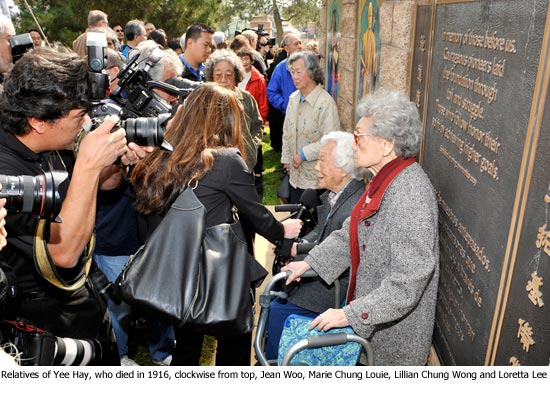











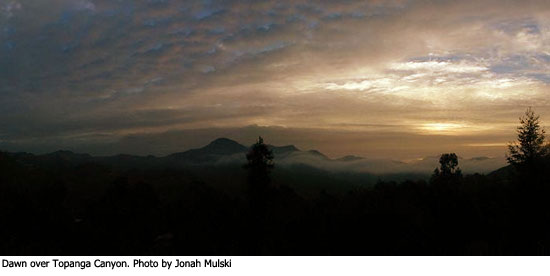
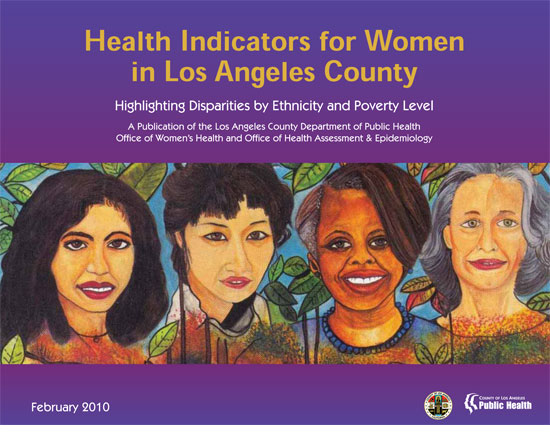

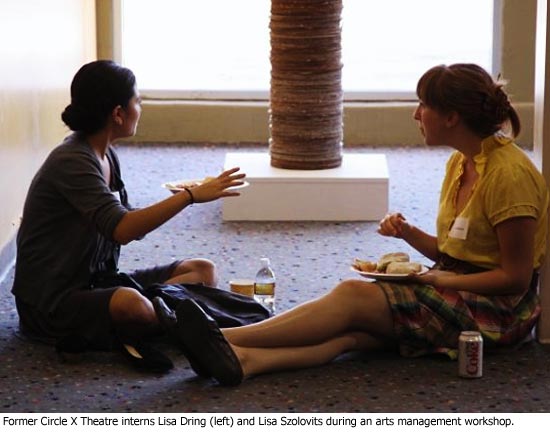





 Check for the latest closure information
Check for the latest closure information








